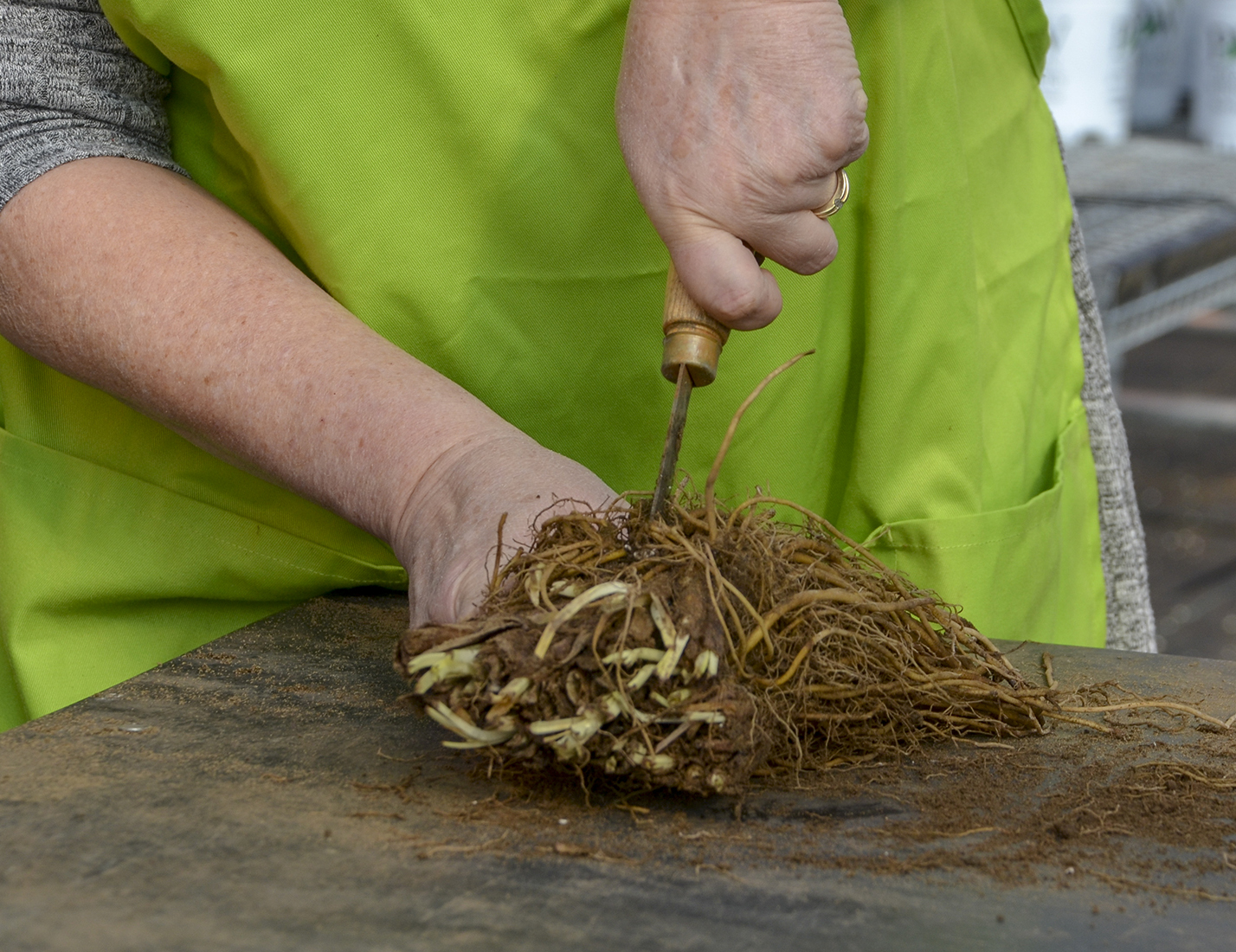Dividing Perennials
A landscape filled with mature, vigorous plants is the dream we all have when we plant perennials. Where they settle in happily, they thrive and multiply, and are ready to be divided after a few years. Here are some tips on how to divide and transplant perennials successfully.

One of the nicest things about growing perennials is that they tend to multiply over time, so they can be divided and replanted or given away to friends and neighbors. In many cases, dividing perennials rejuvenates them so they grow faster and bloom stronger in subsequent years. Let's take a look at some guidelines to follow when deciding how and when to divide the perennials in your garden.
Which perennials can be divided?
Some perennials grow so quickly that they benefit from being divided every 3-5 years to retain their vigor and flower power. Ornamental grasses, daylilies, irises and stonecrop are some examples. Other perennials, like coral bells and rose mallow, stay in a single clump that never needs to be divided. Sometimes, the plant offers clues that it's ready to be divided. For example:
- Does the plant look crowded?
- Does the center of the plant seem woody or dry?
- Were its flowers smaller or less prolific the last few years?
If the answers to these questions are yes, it might be time to divide them.
Perennials with fibrous or loose root systems are the easiest kind to divide. Siberian irises, for example, can often be pulled apart with your hands once you’ve dug them up and shaken the soil off the roots. Ornamental onions like ‘Serendipity’ are similarly easy to pull apart and divide. Dayliliy roots are a little tougher to pull apart but can be cut with a sharp knife. Bee balm and spike speedwell are also easy to divide with a knife.

But wait! Not all perennials like to be divided. It is best NOT to divide plants with woody crowns, a single stem/crown, fragile fleshy roots, or a tap root including:
- False indigo - Baptisia
- Heartleaf brunnera - Brunnera
- Clematis
- Bleeding heart - Dicentra
- Baby’s breath - Gypsophila
- Coral bells - Heuchera
- Foamy bells - Heucherella
- Rose mallow - Hibiscus
- Red hot poker - Kniphofia
- Lavender - Lavandula
- Beardtongue - Penstemon
- Russian sage - Perovskia
When should perennials be divided?
As a general guideline, perennials should be divided in the opposite season of which they bloom. That means if they bloom early in the season they should be divided in fall, and if they bloom late they should be divided in spring. Don't divide a plant that is in flower or is almost ready to flower. Instead, divide after flowering has stopped.
How do you divide perennials?
Carefully dig up the whole clump of the perennial you want to divide so you can easily see its root system. Depending on the plant, it may naturally separate easily into clumps or you may need a knife or sharp spade to cut it into sections. Each piece you pull or cut away from the original clump should be no smaller than what would fit in a 1-quart (4-6”) pot.
Take care to remove any unhealthy parts of the plant, including the woody center of plants like ornamental grasses and irises. Those can go on the compost pile. This is also a good time to cut the foliage back and trim any spent flowers or seed heads off. The plant will appreciate having less foliage to support with its new, smaller root system.
Immediately replant the divided pieces of your perennials into the garden or containers before their roots dry out. Water them in well and wait a few days. They will perk up as they become established in their new home.
What if I mess up?
Handle your perennials gently when you're dividing them, but don't worry about being too hard on a plant that's made itself at home in your perennial bed. Most perennials are amazingly durable. As long as each division has several good roots and some healthy foliage, the plant should grow well in its new digs. Dividing perennials will reward you with healthier, more vigorous performance from your favorite varieties. It also leaves you with more of your favorite plants to share or add to other parts of your garden.
A note about dividing patented plants: Many varieties of perennial plants are protected under U.S. and Canadian patent laws. If a variety is patented or has a patent pending, that will be stated in small print on the plant label. In such cases, it is illegal to divide or propagate and sell that plant. This won’t impact most home gardeners, but if you participate in local garden club plant sales, sell your plants online or something similar, you should know that it is illegal divide any patented or patent pending plants and sell them at such sales or for any other monetary gain.
Ready to learn more? Find tips for maintaining perennial plants here.





